|
|
Other noninfectious
factors:
Light
Water
Temperature
Nutrients
Mites and Insects
|
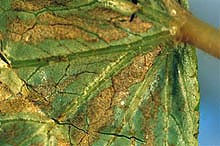
Fig. 1. Broad mite feeding injury to begonias
appears as bronze interveinal patches on
leaf undersides. From the Compendium of
Flowering Potted Plant Diseases. |
|
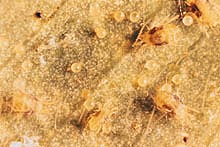
Fig. 2. Adult spider mites and eggs on undersurface of raspberry leaf. (Click image for expanded view).
|
Plant injury symptoms caused by arthropod feeding are rarely mistaken for contagious diseases, since insect or mite bodies, cast exoskeletons, frass, or characteristic feeding injury are usually visible to the careful observer. However, some kinds of damage from insects or mites (Fig. 2) may be confused with symptoms of contagious disease. Common arthropod-caused injuries that can be difficult to distinguish from disease symptoms include the following examples.
The twospotted spider mite, Tetranychus urticae Koch, causes a yellowish stippling of foliage followed by yellowing and necrosis of the oldest leaves. Examination of leaf undersides with a hand lens will clearly show the mites with their characteristic dark spots on the abdomen, pale larvae, round eggs, and (in severe cases) webbing. From a distance, however, twospotted spider mite injury to ivy geraniums (Figs. 3 and 4) might be confused with symptoms of bacterial blight.
|
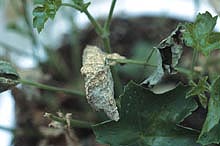
Fig. 3. Twospotted spider mite feeding injury to an ivy geranium (Pelargonium peltatum) leaf. (Click image for expanded view).
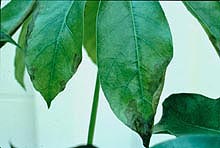
Fig. 4. Damage from spider mite feeding on schefflera grown indoors. (Click image for expanded view).
|
|
Feeding by leafminer larvae (Diptera: Agromyzidae) causes relatively distinctive serpentine patterns, irregular spots, or blotches on foliage. The transparency of the mined area or the observation of frass or larvae in the mined tissue will easily distinguish leafminer injury from that caused by fungal, bacterial, and nematode infections. The most harmful leafminer on ornamental greenhouse crops is Liriomyza trifolii (Burgess).
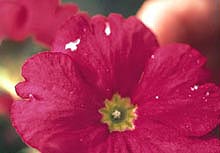
Fig. 5. White patches on Primula flower petals caused by thrips feeding (Courtesy J. P. Sanderson). From the Compendium of Flowering Potted Plant Diseases.
|
|
Thrips (Thysanoptera: Thripidae) feeding may cause small, irregular, whitish patches on leaf or petal tissue (Fig. 5). These spots are accompanied by the deposition of characteristic dark globules of frass that help to identify the cause of injury. The insects themselves are very narrow (0.5 mm) and only 2-3 mm long and thus can easily escape notice, especially in the immature (nymphal) stages, which cause a great deal of the feeding injury (Fig. 6). Thrips feeding within buds leads to distortion of the leaves or flowers that is apparent only days or weeks after the injury occurs. The primary thrips affecting greenhouse crops in the United State is the western flower thrips, Frankliniella occidentalis (Pergande).
|
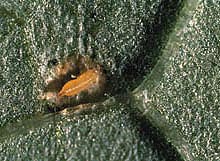
Fig. 6. Immature (larval) western flower thrips (Courtesy J. P. Sanderson). From the Compendium of Flowering Potted Plant Diseases.
|
|
Distortion of the new growth of a plant may be the result of one of several causes, including aphid or thrips feeding, virus infection, or herbicide or ethylene injury. Another cause of leaf distortion that is frequently overlooked is the cyclamen mite, Phytonemus pallidus (Banks). Because this tarsonemid mite is too small to be seen clearly with a hand lens, it is very difficult to diagnose as the cause of leaf distortion. Cyclamen mites have elongated (less than 0.3 mm), pale bodies and feed hidden within leaf or flower buds. Their feeding typically causes stunted, hardened new growth, and this injury is easily mistaken for a nutritional disorder. The cyclamen mite has a wide host range, including Saintpaulia ionantha Wendl. (African violet), Cyclamen persicum Mill., Fuchsia × hybrida Hort. ex Vilm., and Pelargonium spp. (geranium). The symptoms of injury on African violet are fairly characteristic but can be confused with injury caused by foliar nematodes. Cyclamen infested with cyclamen mites also show hardened, cupped younger foliage.
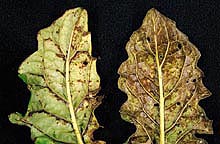
Fig. 7. Purplish discoloration along the veins of African daisy (gerbera) leaves infested with broad mites. From the Compendium of Flowering Potted Plant Diseases.
|
|
Distorted growth on plants may also be caused by feeding of the broad mite, Polyphagotarsonemus latus (Banks). Broad mites, like cyclamen mites, are tiny, pale, and inconspicuous and require the aid of a microscope for identification. On Begonia × hiemalis Fotsch. (Rieger begonia) and Begonia Tuberhybrida hybrids (nonstop begonia), broad mite feeding causes bronzing of the interveinal tissue on the leaf underside and stunting (Fig. 1). On Gerbera jamesonii H. Bolus ex Adlam (African daisy), broad mite feeding may cause a purplish discoloration (Fig. 7). On New Guinea impatiens, leaf edges curl under, resulting in a straplike appearance (Fig. 8).
|
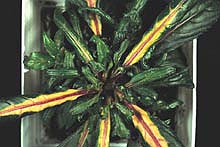
Fig. 8. Leaf edges may curl under on New Guinea impatiens infested with broad mites. (Click image for expanded view).
|
|
Fungus gnats (Lycoriella and Bradysia spp., Diptera: Sciaridae) are common greenhouse pests. The black-headed larvae feed on fungi in the soil as well as on roots and cuttings of crop plants. They are especially damaging to cuttings of P. × hortorum L. H. Bailey (florist’s geranium) and Euphorbia pulcherrima Willd. ex Klotsch (poinsettia). They enter the base of the cutting and feed, often providing an infection court for a fungal pathogen such as a Pythium species and/or preventing normal rooting. Adults may carry fungal pathogen inoculum of Pythium, Verticillium, or Thielaviopsis spp. (and probably other genera) from infested pots or the greenhouse floor to uninfested crop plants.
Shore flies (Diptera: Ephydridae), unlike fungus gnats, do not feed directly on crop plants. However, large populations of these insects will feed and develop on algae in growing media or on the greenhouse bench or floor. The larvae are small, light beige, maggotlike worms without a distinctive head capsule. Shore flies have been shown to transmit both fungal and bacterial pathogens to healthy plants in the greenhouse through the deposition of fecal material containing inoculum.
Sooty mold is a black, nonparasitic fungus growth on the plant surface (Fig. 9). Nonparasitic fungi such as Capnodium sp. and Meliola sp. grow on the honeydew produced by phloem-feeding insects such as whiteflies (Homoptera: Aleyrodidae), aphids (Homoptera: Aphididae), and scales (Homoptera: Diaspidae, Coccidae, and Pseudococcidae). Accumulations of sooty mold reduce the aesthetic quality and marketability of a crop, even though the plants are not directly injured.
|
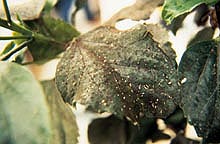
Fig. 9. Sooty mold and cast skins of aphids on a hibiscus leaf (Courtesy J. P. Sanderson). (Click image for expanded view).
|
|
Insect pests common to the greenhouse environment may also have an important role as vectors of plant viruses. The western flower thrips is the most important vector of impatiens necrotic spot and tomato spotted wilt tospoviruses. The melon aphid, Aphis gossypii Glover, and the green peach aphid, Myzus persicae (Sulzer), both very common on flowering potted plants, are capable of vectoring a number of viruses that may affect flower crops. Bemisia tabaci (Gennadius), the sweetpotato whitefly, is a vector for many viruses worldwide, but the strain of this insect found in greenhouses (the silverleaf whitefly, or strain B) has not yet been implicated as a vector for any diseases of flowering potted plants.
Selected References
Baker, J. R., ed. 1978. Insect and Related Pests of Flowers and Foliage Plants. North Carolina Agricultural Extension Service, Raleigh.
Powell, C. C., and Lindquist, R. K. 1992. Ball Pest and Disease Manual. Ball Publishing, Geneva, IL.
RETURN TO APSnet FEATURE STORY
